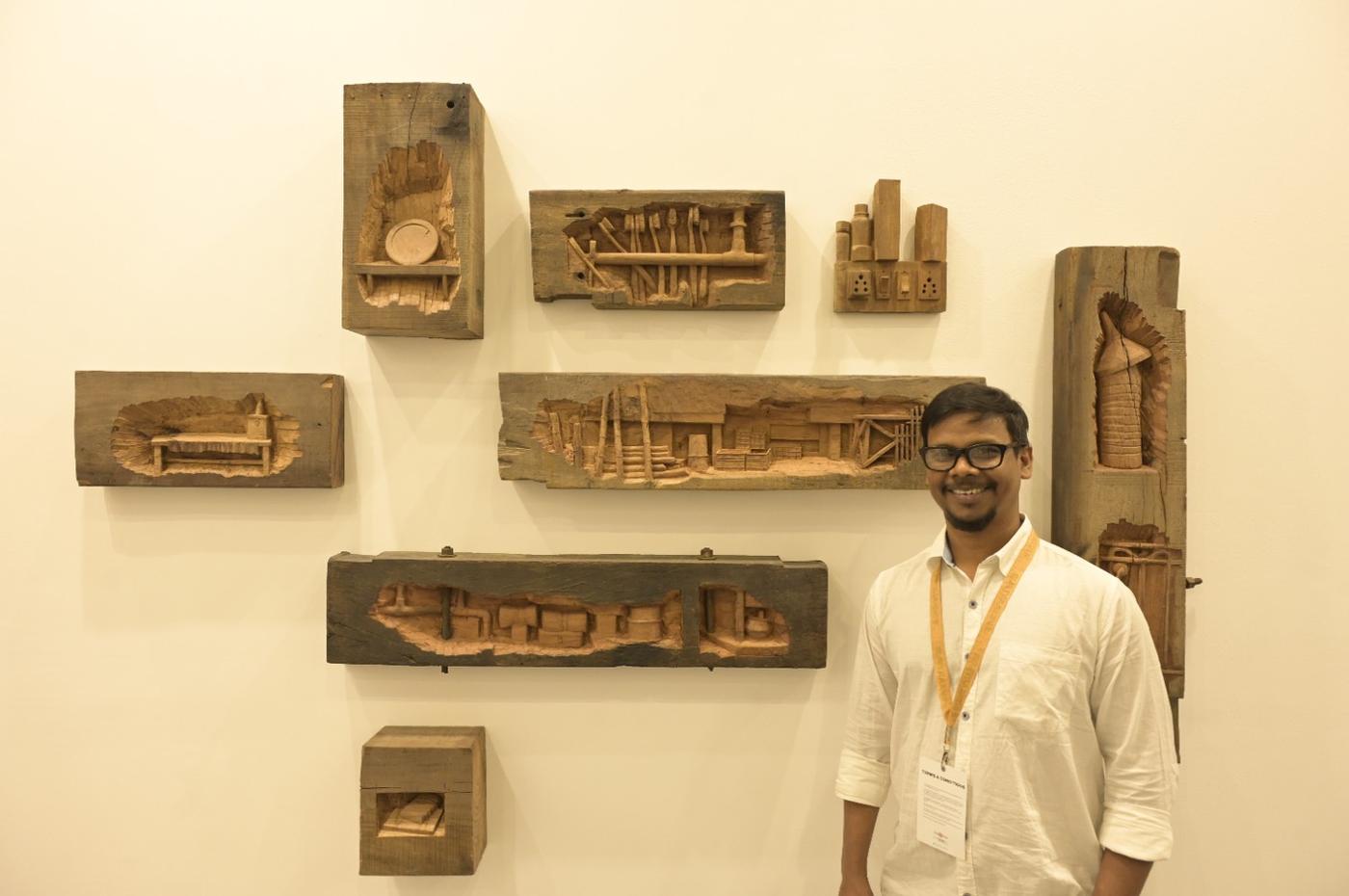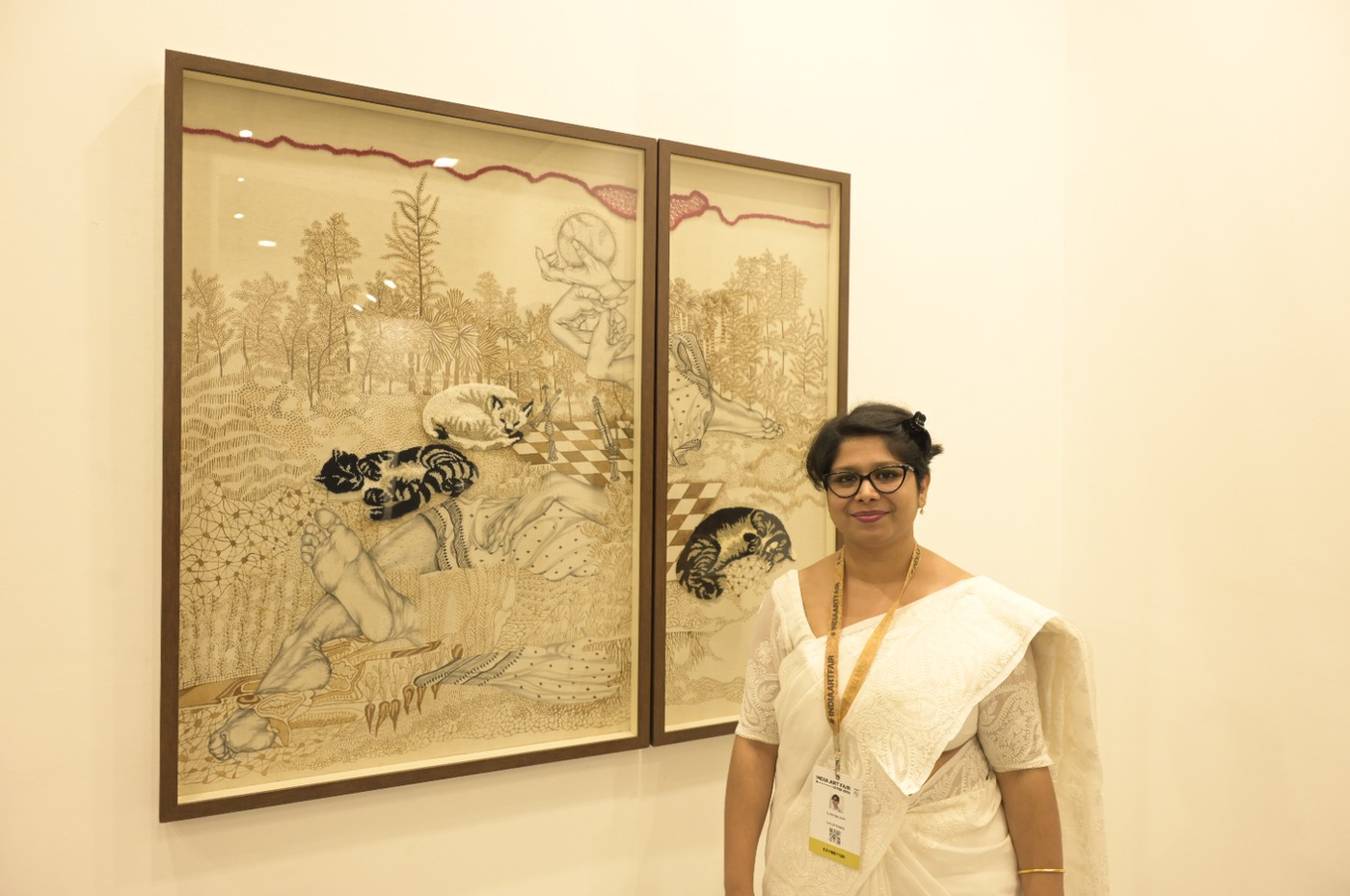
Image Credit - Hyperglot Review
Bhargavi Gundala founded the Hyderabad-based Dhi Artspace in 2014. She is an artist as well as a patron
and collector of modern art and encourages emerging artists by providing a forum for dialogue and
engagement. Since its debut, Dhi has collaborated with new and up-and-coming contemporary artists and
has sparked numerous discussions on Indian art practices. Dhi Collective, an intervention outside the
white cube space that serves as an incubator for debates, is the result of the gallery's efforts to
stimulate creative and intercultural expression. Dhi hosts its annual artist residency as well as
workshops, seminars, and mentorship programmes throughout the year. It is connected to a network of
artists, curators, scholars, and art fans.

Image Credit - Hyperglot Review
This year, Dhi Artspace is showcasing the works of four emerging contemporary artists whose inspiration
comes from the discipline of visual storytelling. While Leena Raj chooses to translate popular proverbs
from Malayalam onto her canvases, Poorvesh Patel uses rusted copper wires as a medium to revisit his early
memories of farming in Gujarat, and Sumana Som stitches pieces of her personal history and life together
in one plane. Arjun Das iterates the story of workers in Kolkata's Bara Bazar in his compositions.
The artists use a variety of media while reflecting on their socio-cultural identities to start
discussions about urbanisation, migration, labour, and the environment.

Image Credit - Hyperglot Review

Image Credit - Hyperglot Review
Arjun Das
Arjun recounts the struggles of the immigrant working class in Kolkata and makes mention of the lives
of young labourers who were forced to forgo their elementary education in order to start over in the city,
an "imagined" paradise. He reacts to the interiority of a displaced laborer's daily existence using a wide
range of dialogues with the workers in Bara Bazar, Kolkata, together with his experiences as a young
immigrant in the city. In his most recent works, Arjun expands on his earlier explorations of wood to
include fresh inquiries into metal, stone, coal, terracotta roof tiles, and asphalt—all essential
components of the city worker's daily life.
Leena Raj
Leena views the typical conception of a home as a constrained area of homogenised identities and broadens
the idea of a person's home beyond the defined space of four walls. According to her, a home is made up
of diverse lives brought about by the affectionate companionship or the incongruities of unfamiliarity
in the relationships of its other residents. She searches for a place to call home in all directions and,
as she shows her fondness for diverse microcosms, creates fantastical landscapes in which people coexist
peacefully with the natural world.
Poorvesh Patel
Poorvesh's colour scheme serves as the protagonist in his works, which are amplified accounts of his
personal adventures. Through his works, his emotional behaviour interacts with the current
socio-political environment. He uses examples from his everyday life to help create a mental image,
and compares it to his subconscious. That idea is omnipresent in his workflow. “It is like seeing another
life after a loss. It is like the phoenix having a rebirth every time.”
Sumana Som
Sumona engages in the practice of cartography, examining the aesthetics of visual representation while
incorporating elements from Indian miniature painting traditions into her creations. She primarily uses
textiles and manipulates the spatial relationships between her subjects to build layered narratives that
unite the past and present in a single frame. Sumana addresses the intricate relationships between
distance, boundary, ownership, encroachment, and power structures that permeate our daily lives through
her endeavour.